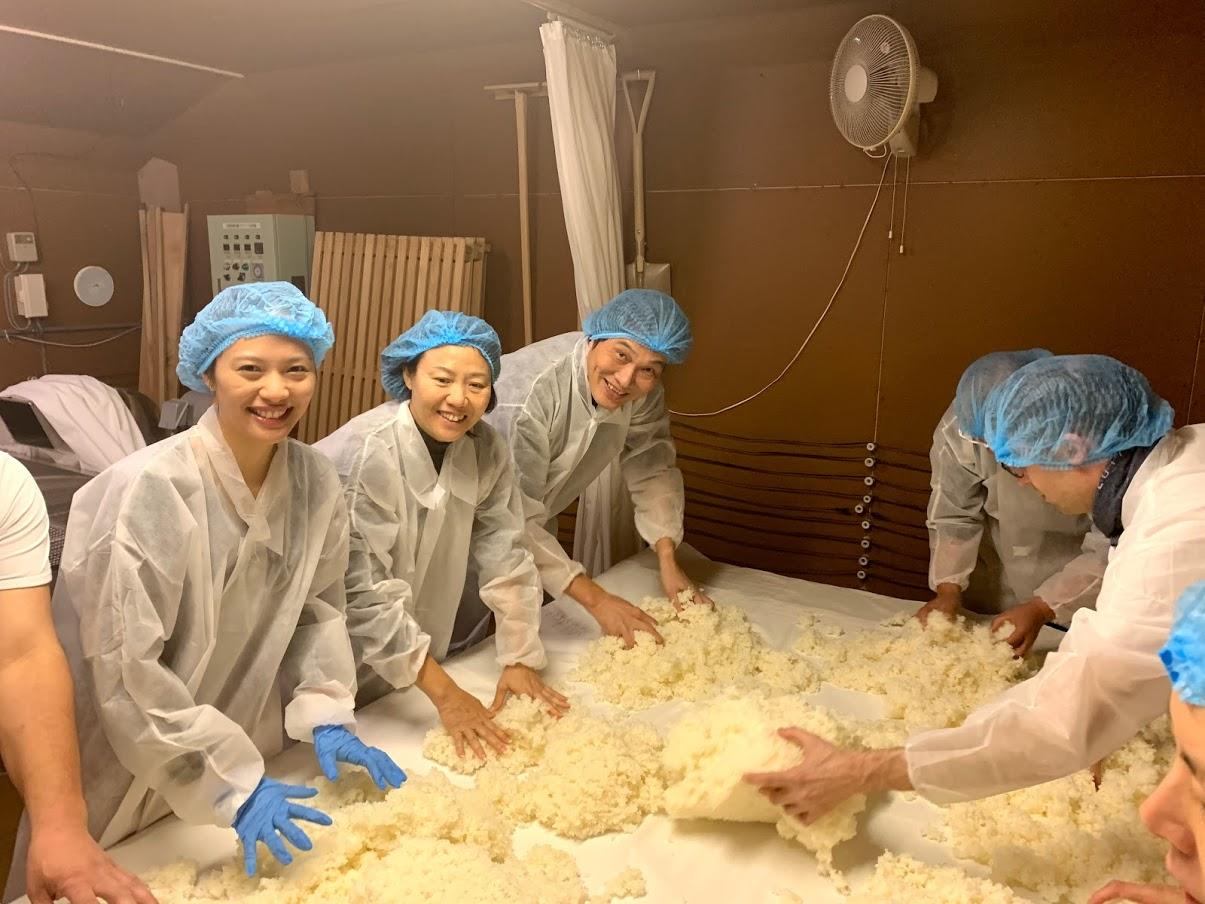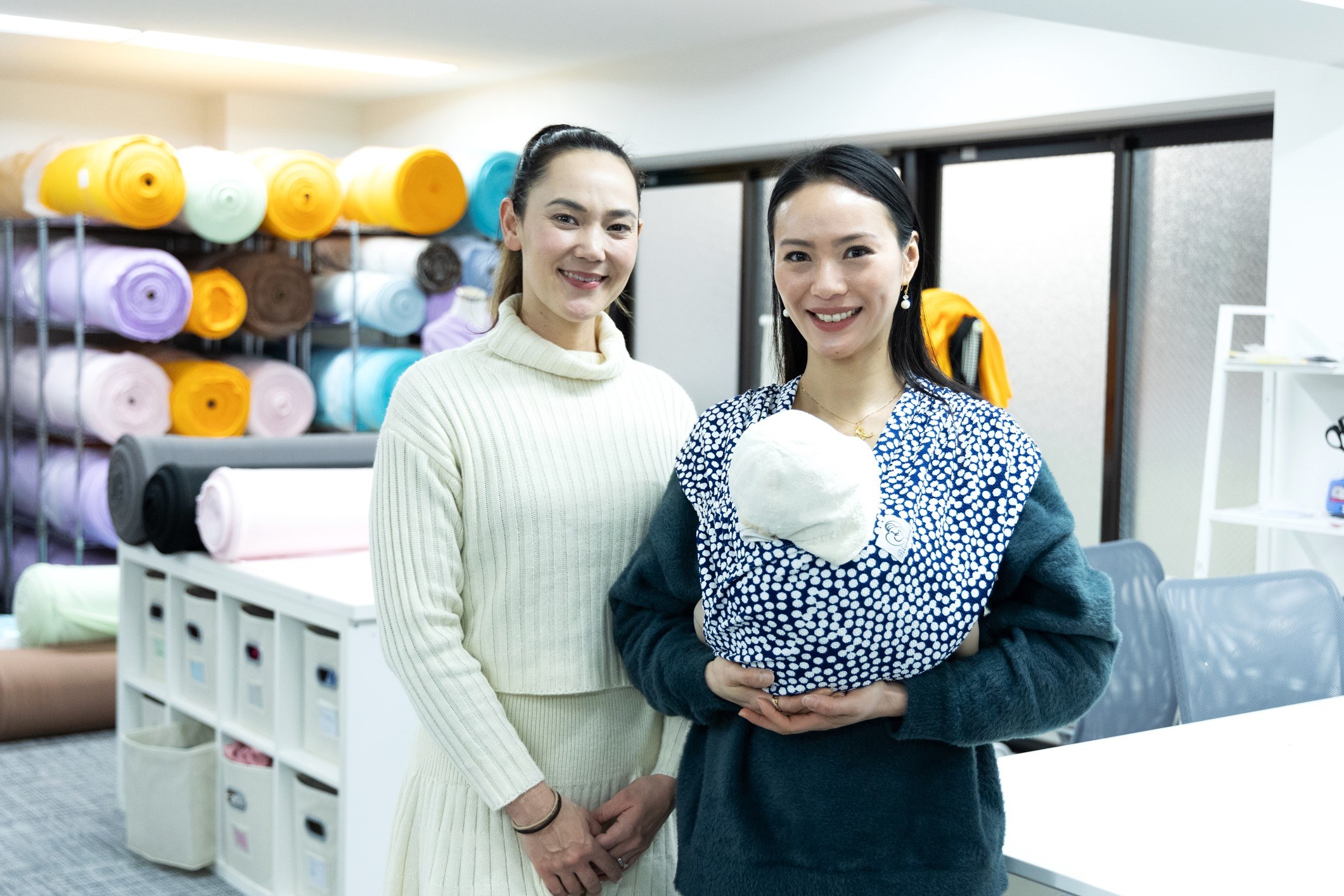Many of you will know about sake and may even be avid sake-drinkers, but have you ever wondered about the process of sake brewing or perhaps even trying to make your own sake first-hand?
皆様は日本酒についてご存知だと思います。熱心に飲んでいる人もいるかもしれないですよね。でも、日本酒を醸造するプロセス、あるいはおそらく自身の日本酒を直接手に入れようと試みることをしたことがありますか?
Last year, I visited the Aoki Sake Brewery to attend a brewery tour and learned a great deal about the sake-making process.
去年、青木酒造を訪ねて醸造所見学に参加し、日本酒の製法について多くのことを学びました。
Click here to read: https://rachelleng.com/aoki-sake-brewery-tour/
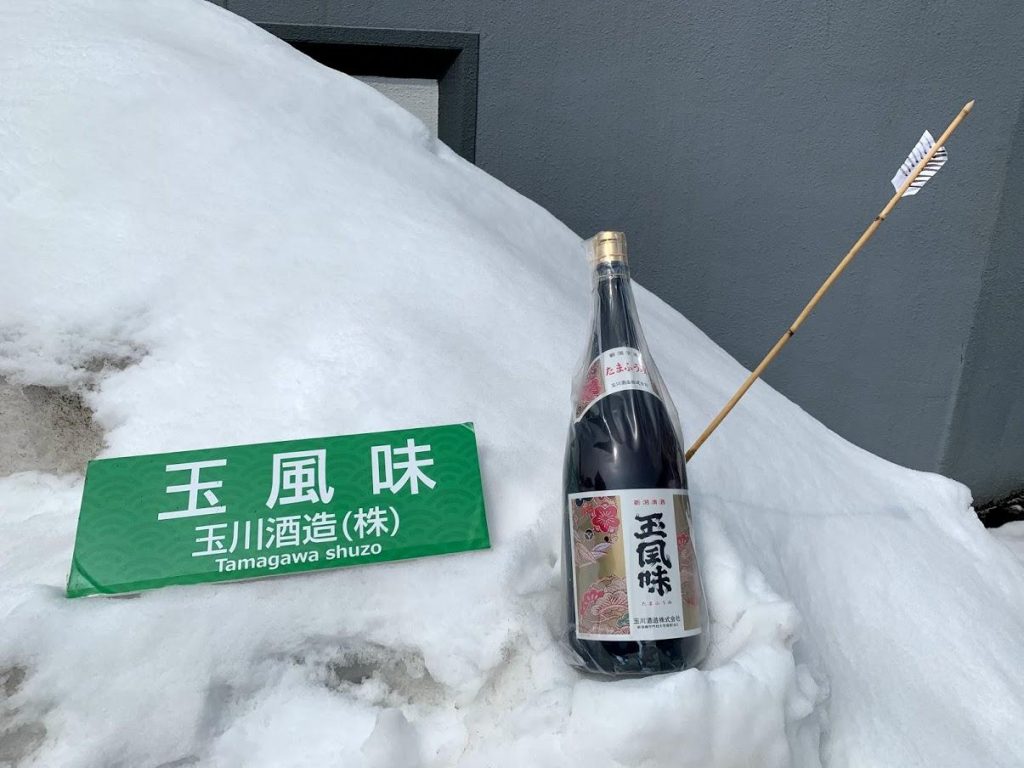
This past Spring, I visited the Tamagawa Sake Brewery in Uonoma city of Niigata prefecture together with my family for a special sake-making tour and experience! This special experience is organized once a year by Sake Lovers, Inc. Read on to check out the sake I made, and also follow my experience of tasting aged sake made in 1990 (29 years old)!
今春、新潟県魚沼市の玉川酒造を家族と一緒に訪れ、特別な酒造りツアーに参加しました! この特別な経験は、サケ・ラバーズ株式会社によって年1回開催されています。私が造った日本酒と、1990年(私が生まれた年です)に造られた日本酒を試飲した経験について続けてご覧くださいね~
*~*~*
Let’s Make Sake at Tamagawa Brewery!
玉川酒蔵で酒造りしましょう!
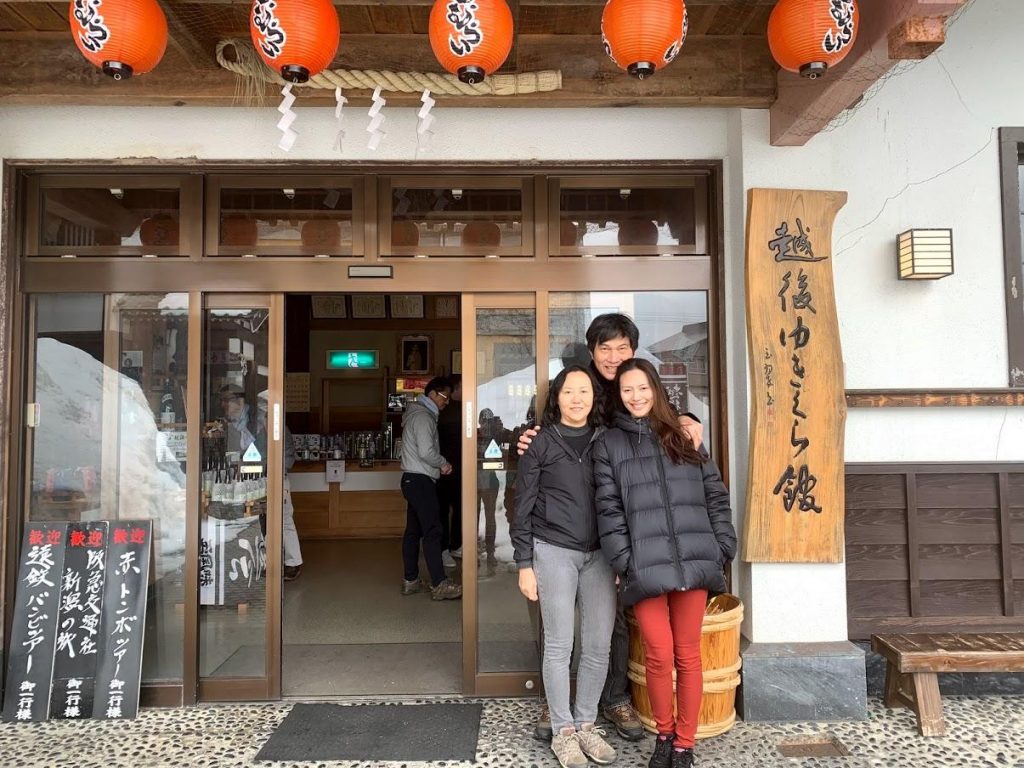
Tamagawa Sake Brewery is located in Niigata Prefecture’s Uonuma city, one of the heaviest snowfall areas in the world! Every year, they accumulate up to 3 meters of snow on the brewery grounds. The snow was still plentiful at Tamagawa Sake Brewery even when we visited at the end of Spring.
玉川酒造は、新潟県の魚沼市にあり、世界でも有数の降雪地帯でもあります。 毎年、彼らは醸造所の敷地に最大3メートルの雪を積んでいます。 玉川酒造では、春の終わりに訪れたときでも、まだ積雪は多かったですよ。

Established over 340 years ago, Tamagawa Sake Brewery is one of the oldest sake breweries in Japan. The traditional techniques and taste have been passed down and developed over generations of kurabito (蔵人), workers skilled in the art of brewing sake.
340年以上前に設立された玉川酒造は日本で最も古い酒蔵のひとつです。 伝統的な技法と味は受け継がれ、何世代もの蔵人、酒造りの技術に精通した人たちを通して発展してきました。
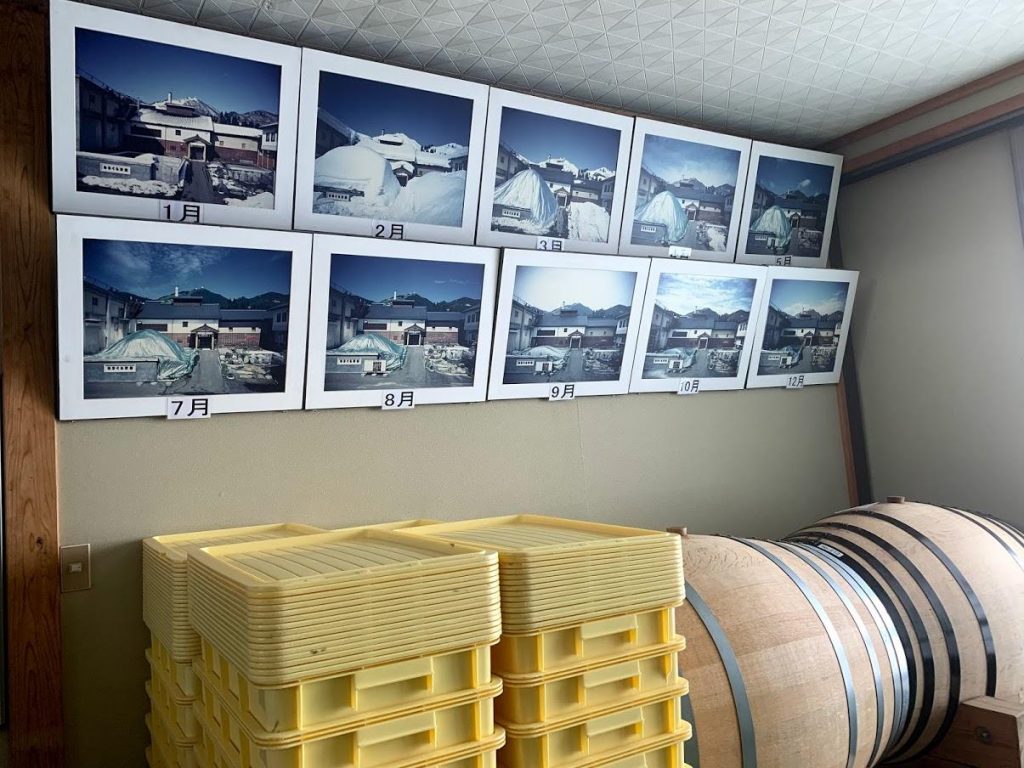
Images displayed on the wall capture the snowy scenery of the brewery throughout the year.
壁に表示された画像は、年間を通して醸造所の雪景色を示しています。
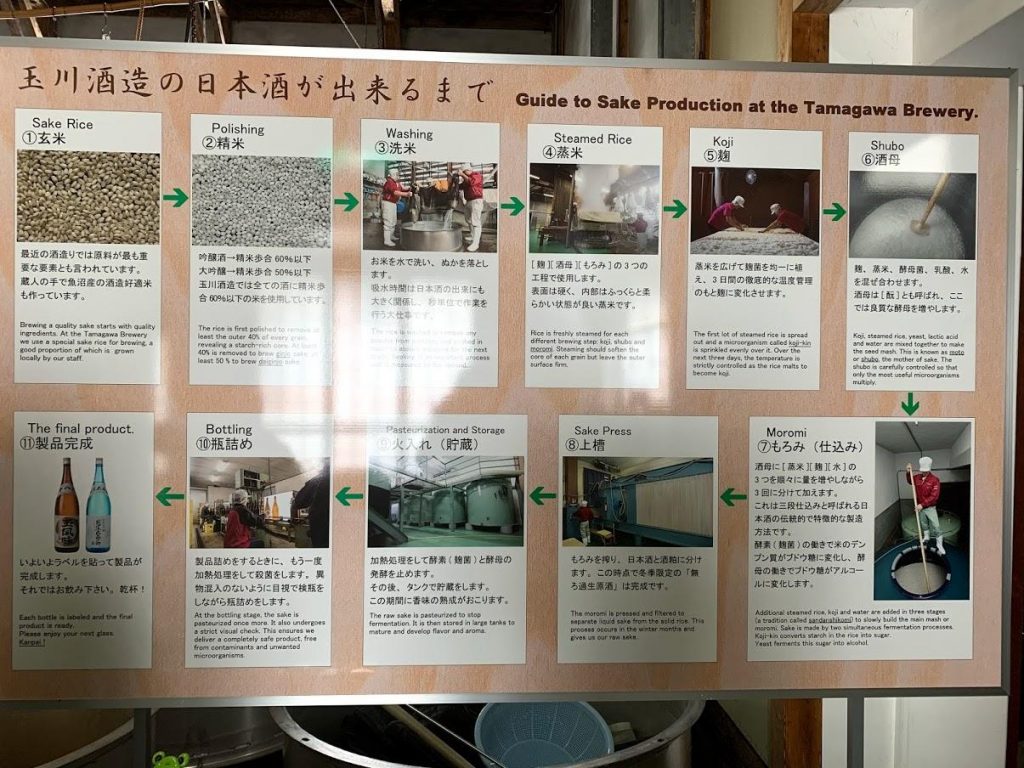
Overview of the sake production process at Tamagawa Brewing.
玉川酒造の酒造りの工程の概要。
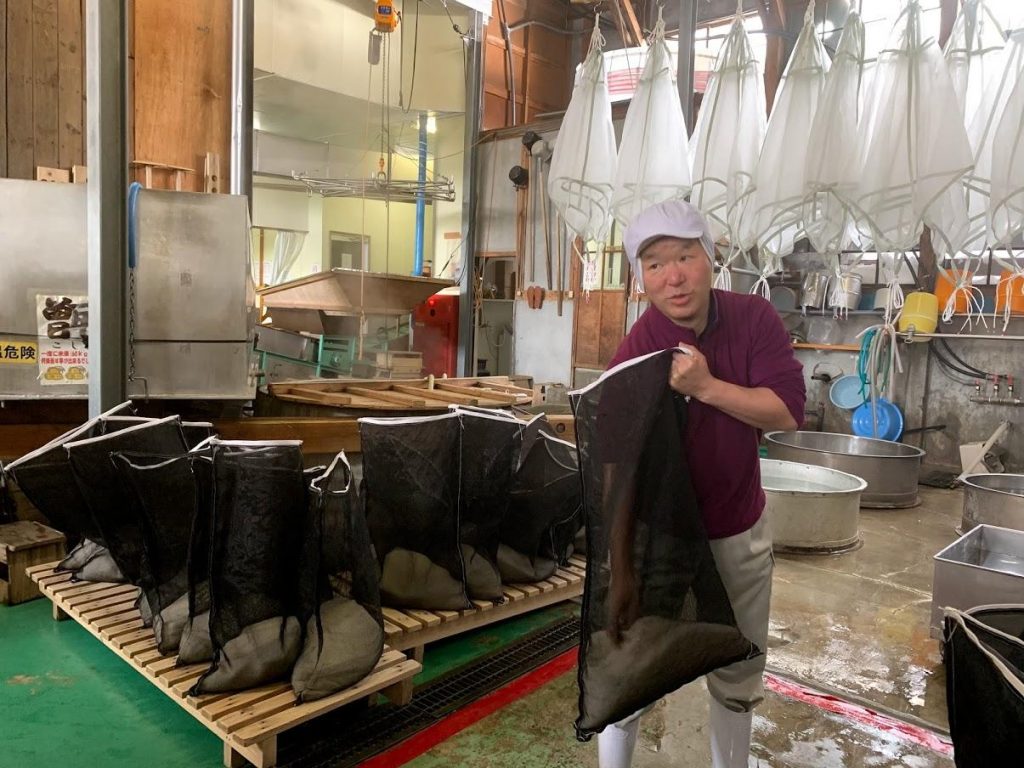
While we had a tour of the whole brewery and learnt about the entire process from start to finish, it was fun to participate in some of the daily activities of the kurabito (蔵人), including rice washing and working in the koji room.
酒蔵所全体を見学し、最初から最後までの全過程について学びましたが、炊飯や麹室での仕事など、蔵人と一緒に活動し、参加するのは楽しいものでした。
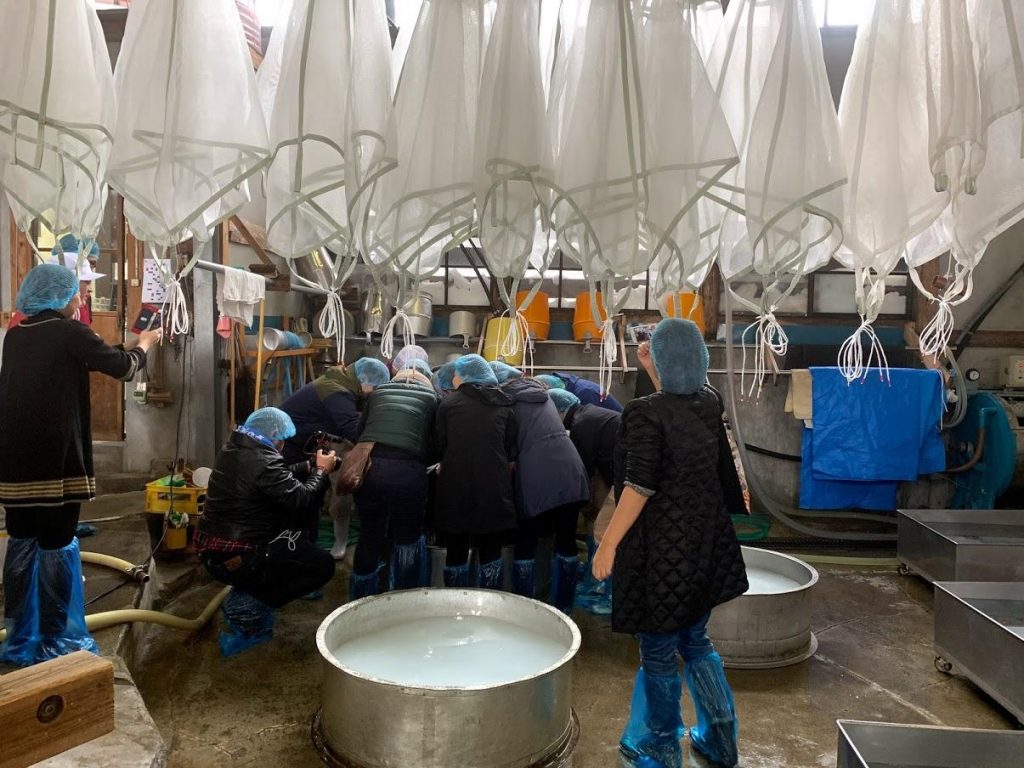
Upon entering the building, we found ourselves in a large area where we experienced how sake rice is washed and steamed! Generally, sake is made from October to March every year. The key to brewing good sake is a cold climate, so the process is traditionally carried out during the winter months.
建物に入ると、私たちは広い場所で、酒米がどのように洗われ、蒸されているかを経験しました! 一般的に、日本酒は毎年10月から3月にかけて造られます。 良い酒を醸造するための秘訣は寒い気候です。そのため、このプロセスは伝統的に冬の間に行われます。
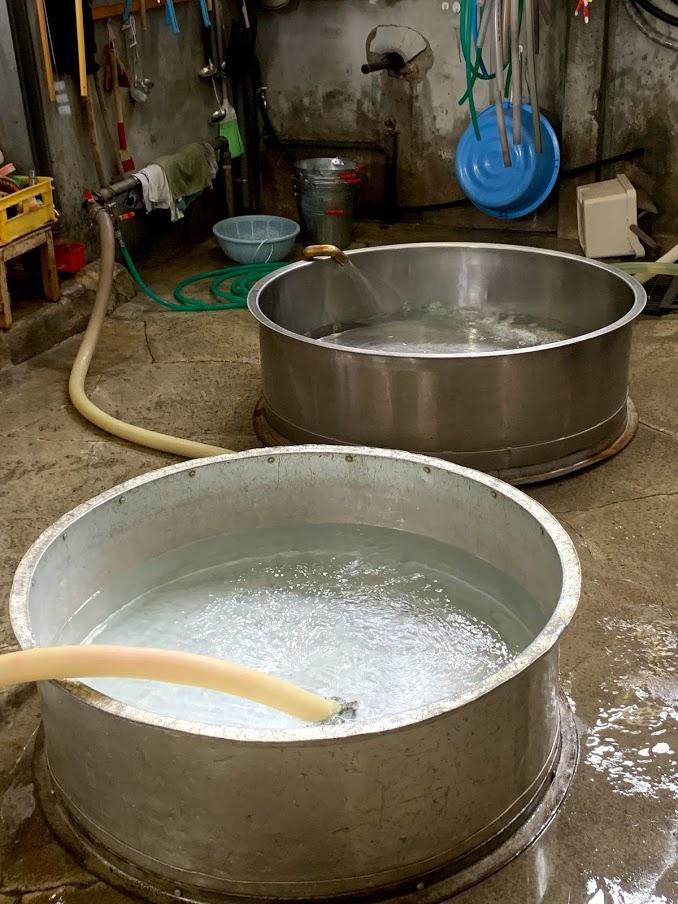
Rice Washing
洗米をしましょう!
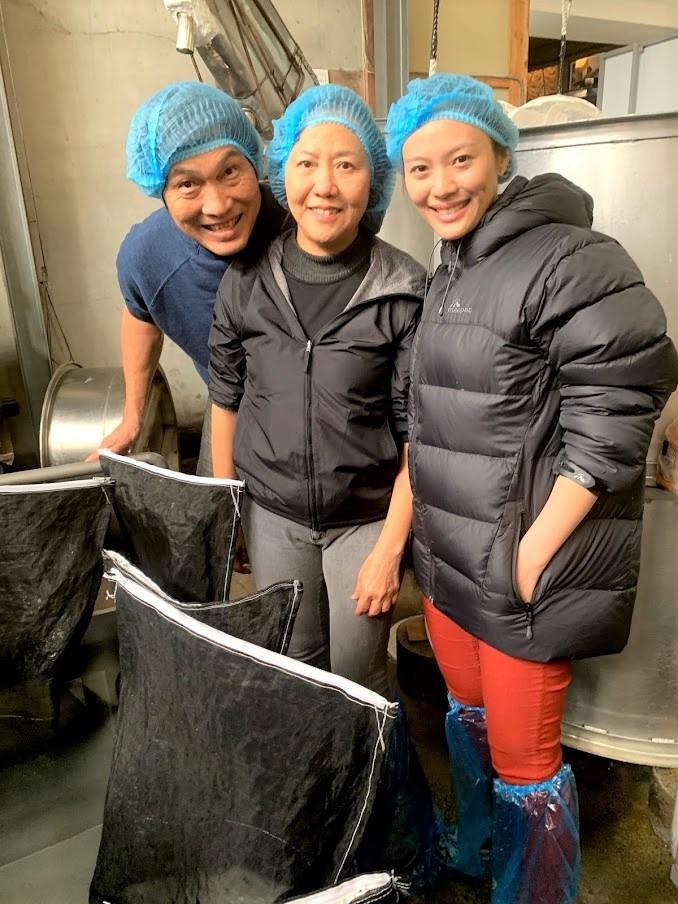
First, we tried out the senmai (洗米、literally “rice washing”), the process of rinsing the rice that will be used for sake brewing.
最初に、私たちは酒造りに使われる米をすすぐプロセス「洗米」をしました。
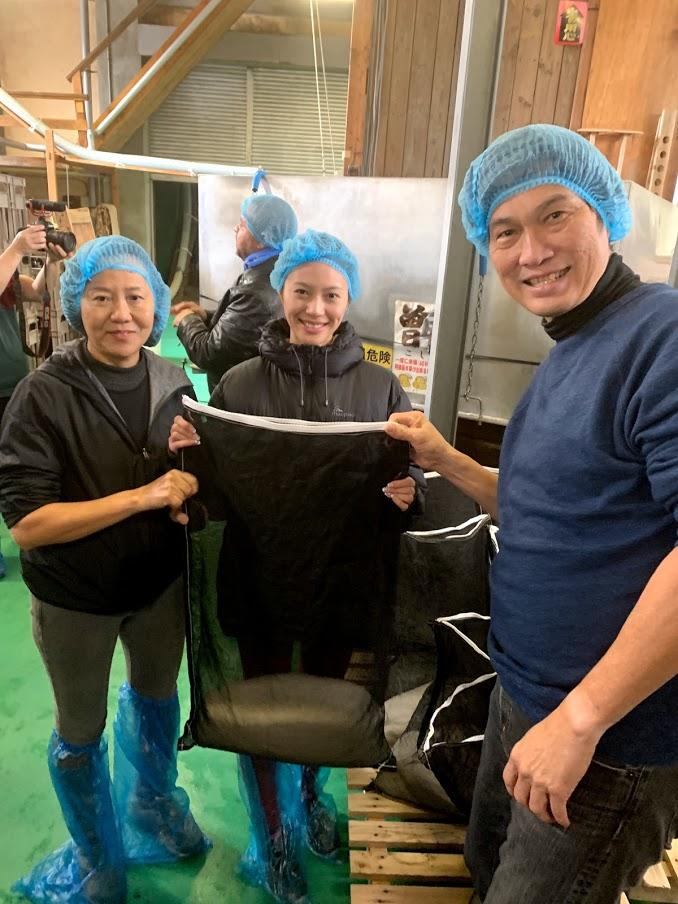
Getting ready to participate in the senmai process! Each of us took one bag of rice to wash.
「洗米」準備をしています!
一人つづ米を一袋持って洗いました。
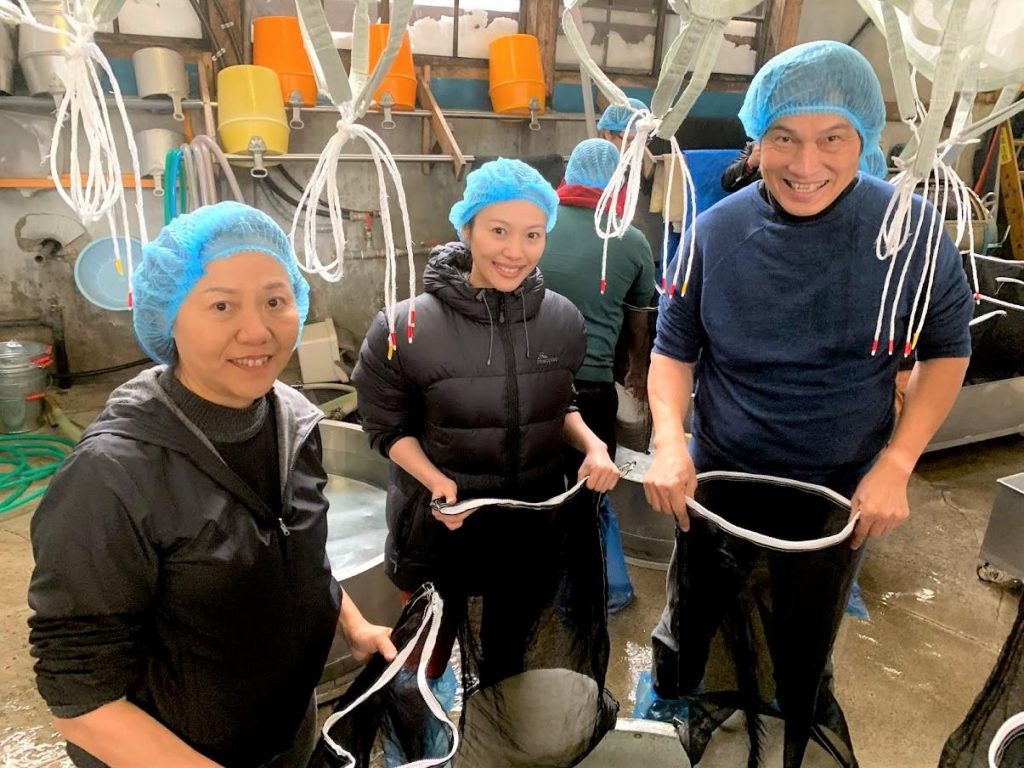
The water used for washing rice is kept at extremely cold temperatures! I could not feel my fingers even though we only washed the rice for a few short minutes!
米を洗うために使用される水は非常に冷たいです! ほんの少しの間米を洗っても、私は冷たくて指先がしびれました..!

After washing the rice, we leave it in clean water to soak for some time.
米を洗った後、しばらくの間水に浸すためにきれいな水の中に置いておきます。
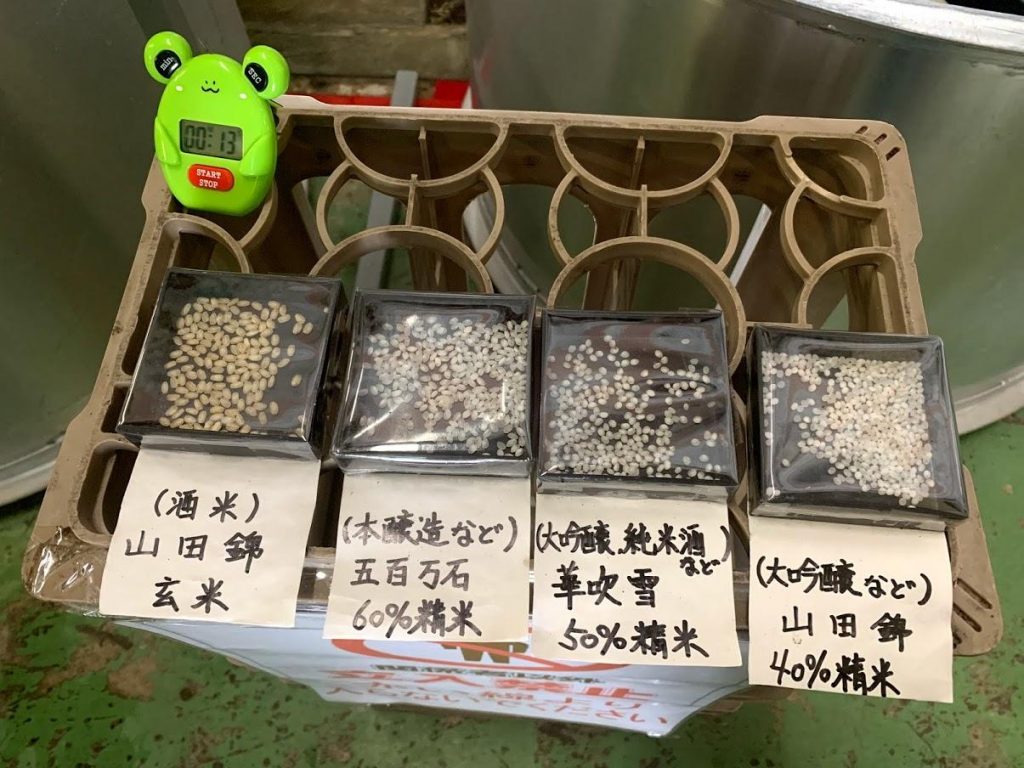
The type and quantity of rice washed varies depending on the type and quantity of sake that needs to be brewed.
お米の種類と量は、醸造する酒の種類と量によって異なります。
Sake grades are determined by how polished the rice grains are (more polished = smoother and better quality sake). The highest grade of Daiginjo often uses rice that is over 60% polished (less than 40% of the original grain remaining).
清酒の等級は、米粒がどれだけ磨かれているかによって決まります(より磨かれているほど滑らかで質の高い酒が造られます)。 最高級の大吟醸は、精米が60%を超えている(元の穀物の40%以下)ことが多いです。
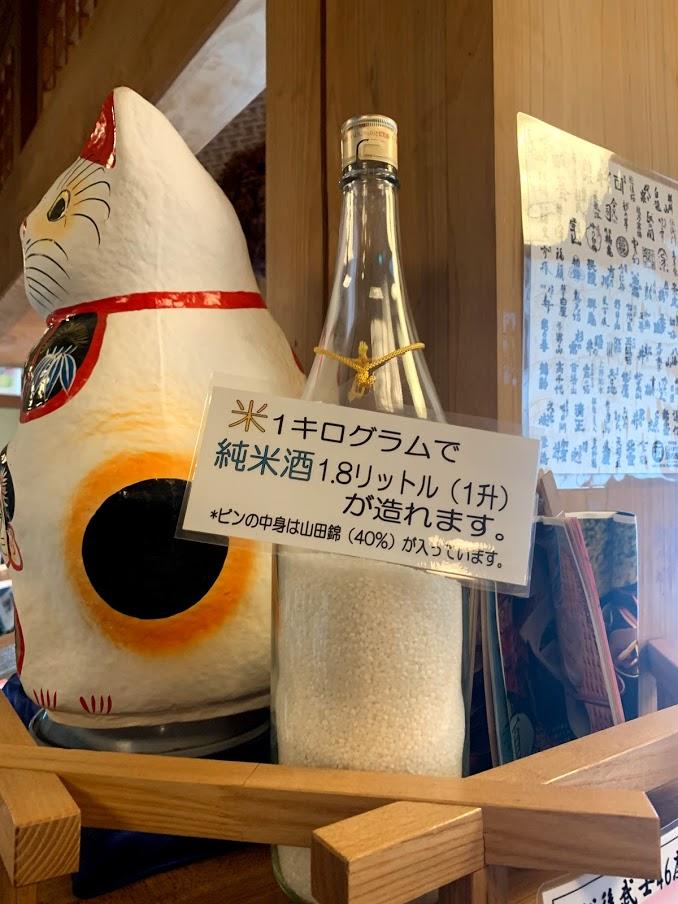
1 kg of rice makes approximate 1.8L of sake at the Junmai grade (using rice that is about 50% polished)!
純米1kgの米で、お酒は約1.8Lになります(精米約50%の米を使用)。
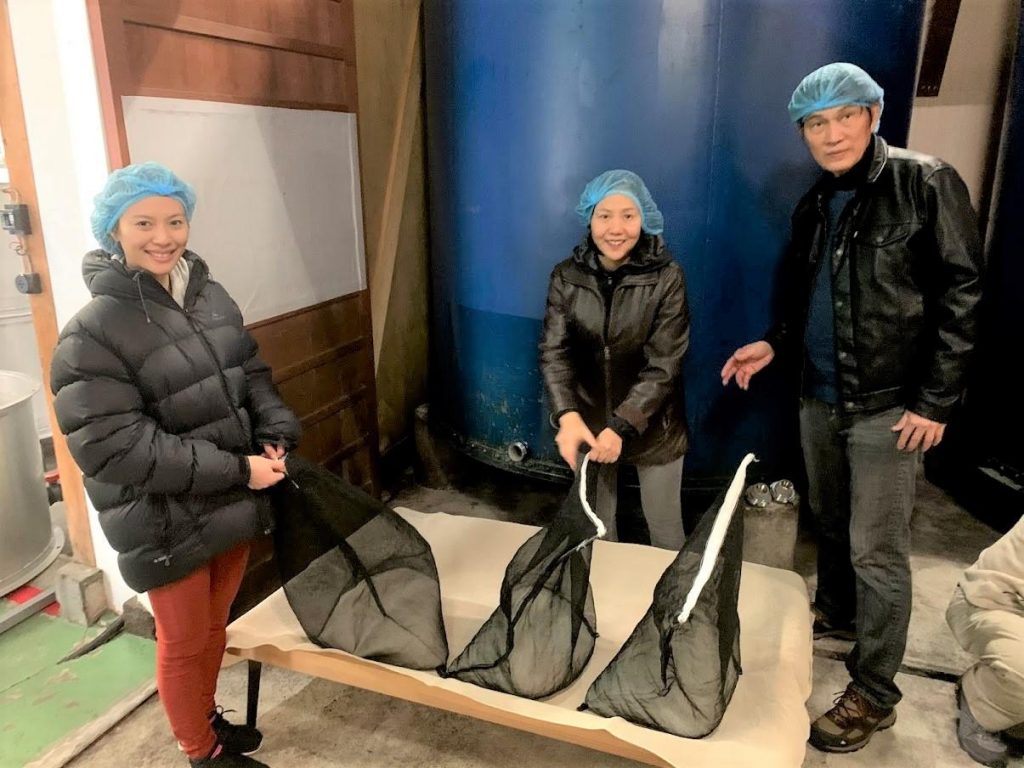
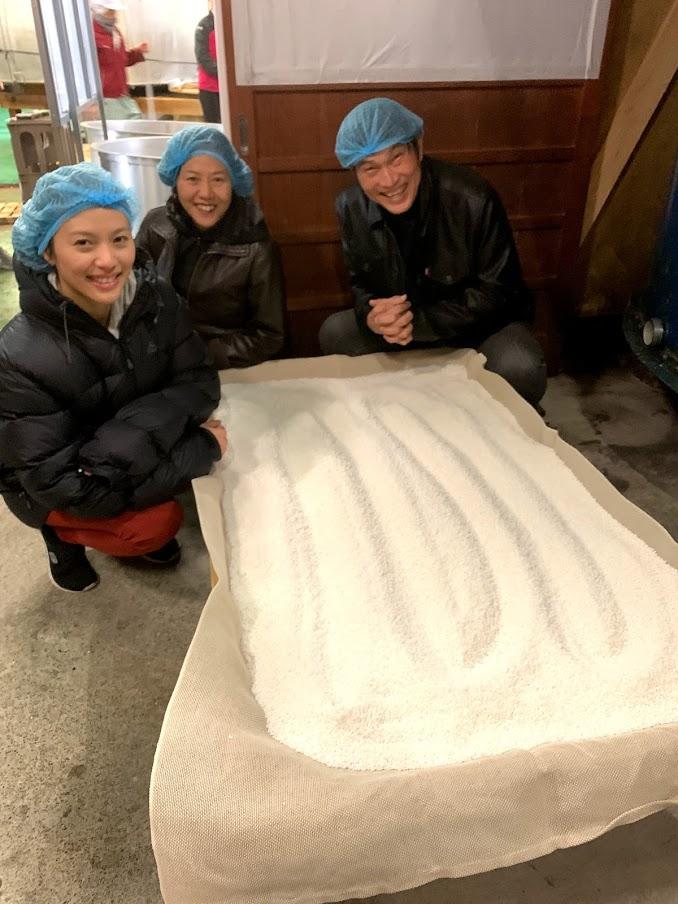
After washing and soaking the rice, we laid it out evenly to dry.
米を洗って水に浸した後、平らに広げて乾かします。
Eat a Local Lunch
地元の昼食を食べましょう!
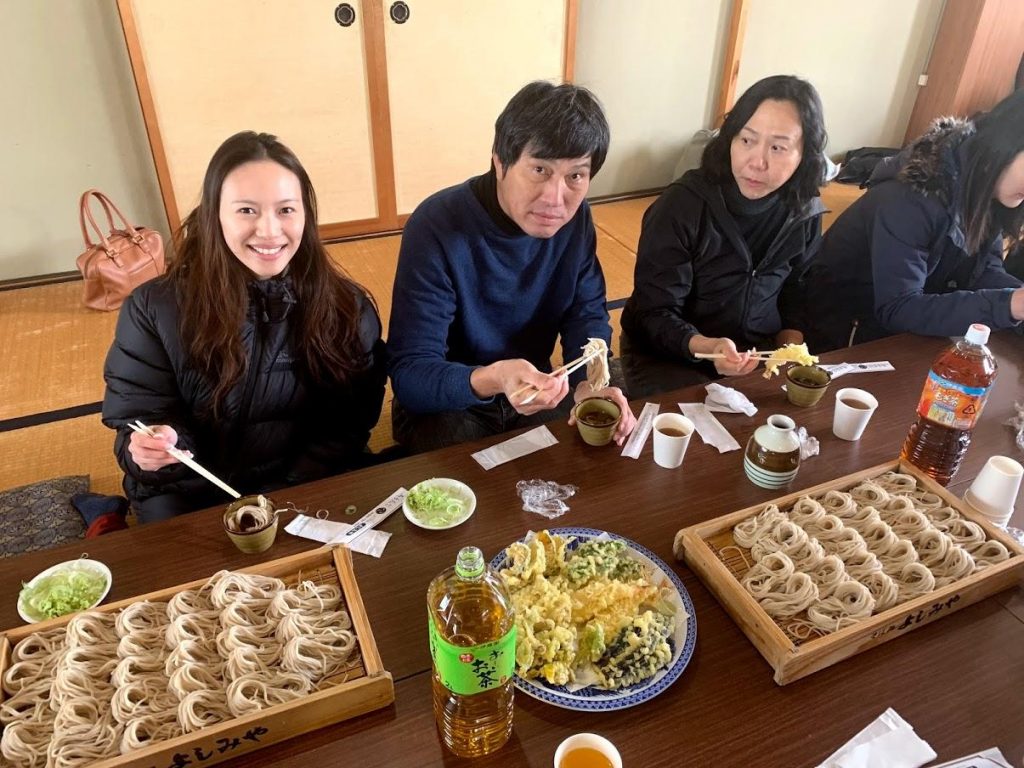
While waiting for the rice to dry before our next activity, we had lunch of local Niigata soba noodles, called Hegisoba, and tempura! Hegisoba is soba that is served in a wooden dish called a “hegi.” This type of soba is famous for its smoother and firmer texture compared to common soba noodles. Moreover, it is separated into individual mouthfuls, making it easy to eat!
私たちは、米が乾くのを待っている間に、「へぎそば」と呼ばれる地元の新潟そば、および天ぷらのランチを食べました! 「へぎそば」は、「へぎ」と呼ばれる木の皿を使うお料理です。そばは、一般的なそばに比べて、なめらかでしっかりした食感で有名です。 さらに、それは1口で食べられる量に分けられて、食べやすいです!
The Koji Room
麹の部屋
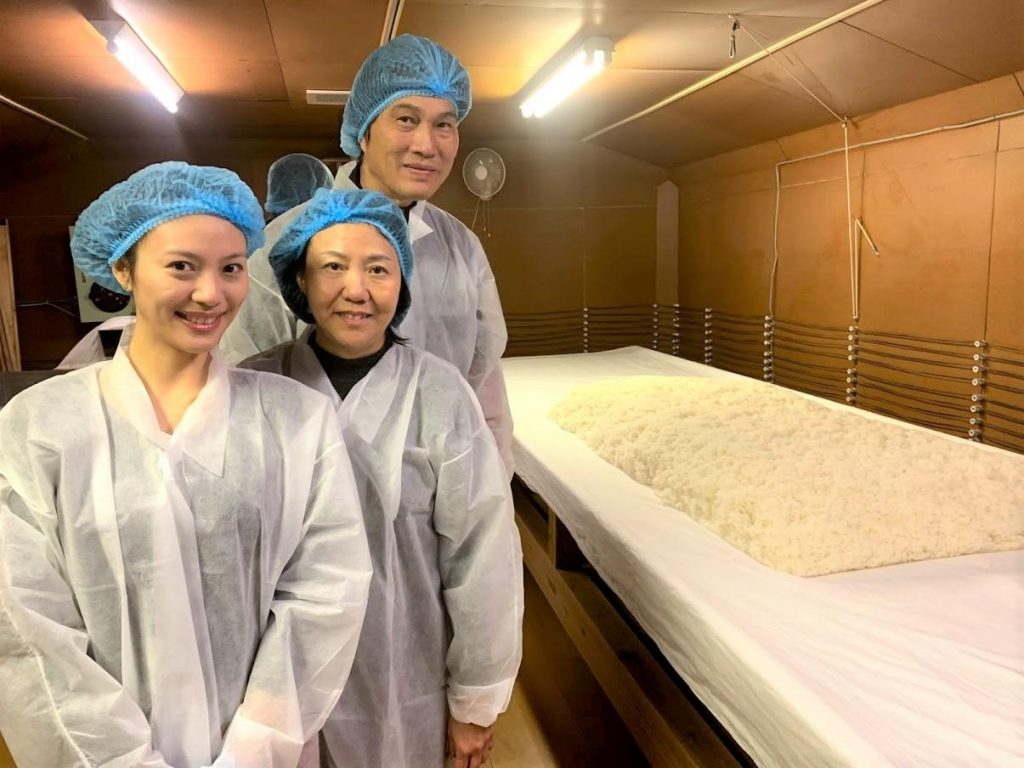
After the rice is dried, it is placed in a steaming basket and steamed for about 80 minutes. Each basket can contain about one ton of rice (around 20 bags of rice).
When the freshly steamed rice is cooled to a specific temperature, it is transferred to the Koji room, where the rice is spread out and a microorganism called koji-kin, a mold enzyme that starts the fermentation process, is spread over it.
お米が乾いたら、蒸し籠に入れて80分ほど蒸します。 各バスケットには約1トンの米(約20袋の米)を入れることができます。炊きたてのお米を特定の温度に冷やすと、麹の部屋に移され、そこで麹菌と呼ばれる発酵プロセスを開始するカビ酵素を加えます。
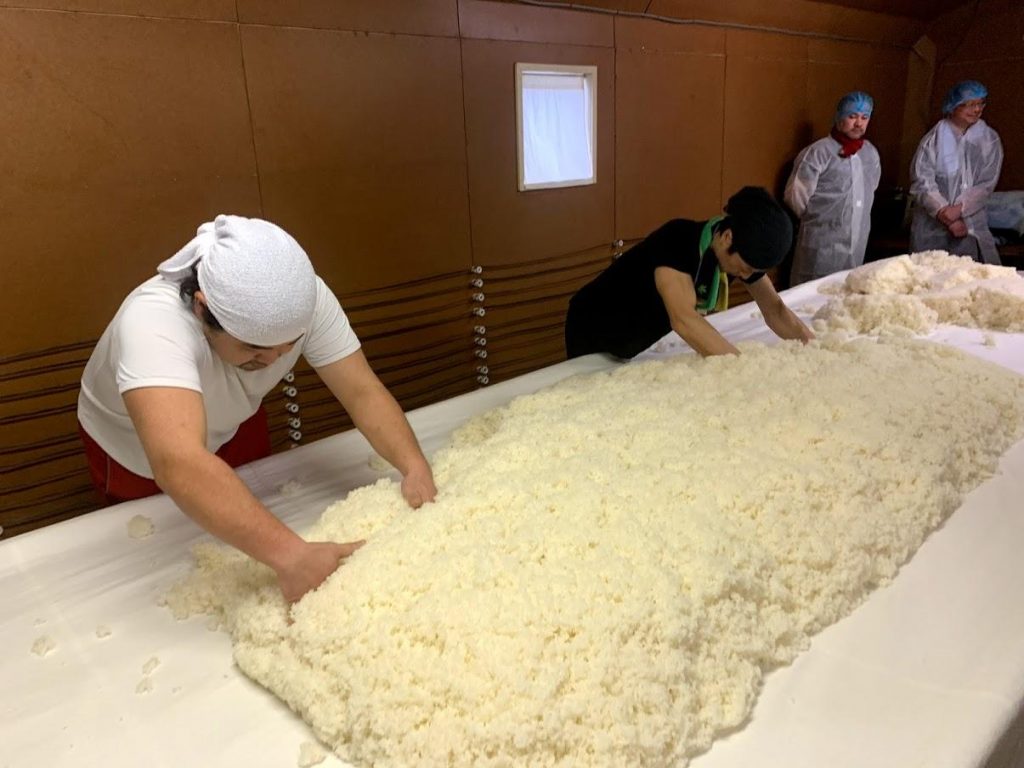
Demonstration of how to spread out the rice by kurabito.
米を広げる方法のデモンストレーション。
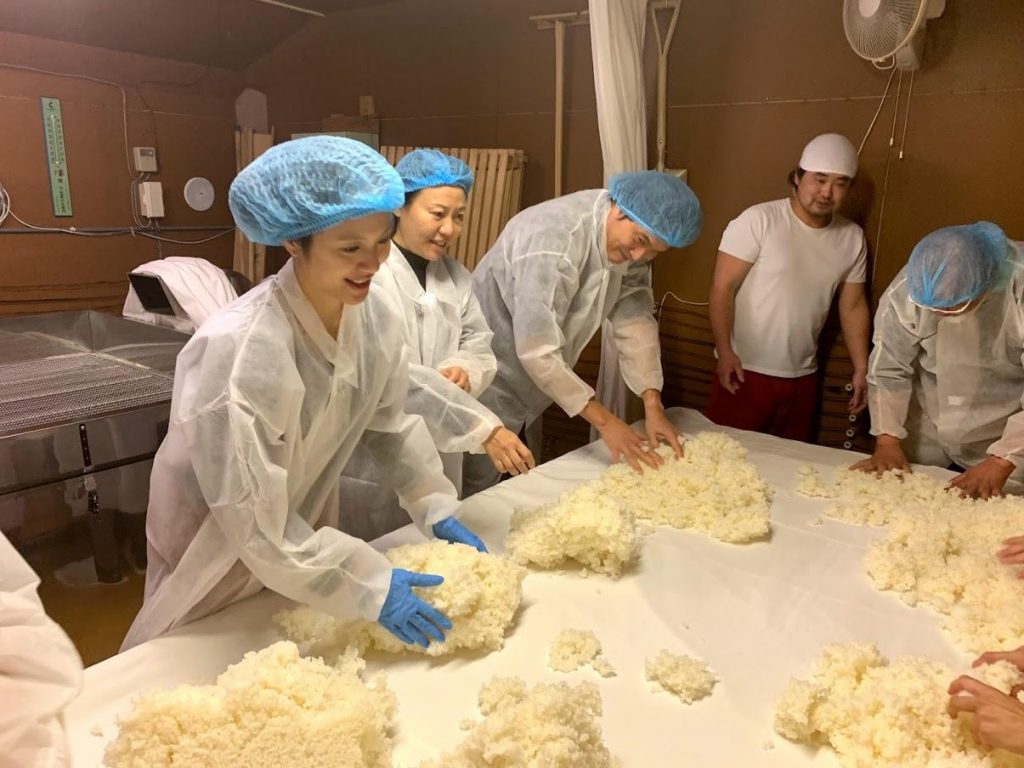
It is a big group effort to spread out and knead the rice, preparing it to effectively receive the koji-kin!
麹を効果的にするための準備として、グループで米を広げて練ることはとても大切な作業です。
| Did you know? The difference between the rice we eat and rice used for sake is that sake rice is soft on the outside with a hard kernel, making it possible for Koji to penetrate and start the fermentation process by converting the starch into sugar. In contrast, the rice we eat has a hard outer husk but a soft inner core. |
| ご存知でしょうか? 私たちが食べる米と日本酒に使われる米の違いは、日本酒の米は中が硬い核で外側が柔らかいため、麹が浸透して澱粉が砂糖に変わることで発酵が始まります。その一方で、食用の米は外側は硬いが内部は柔らかいのです。 |
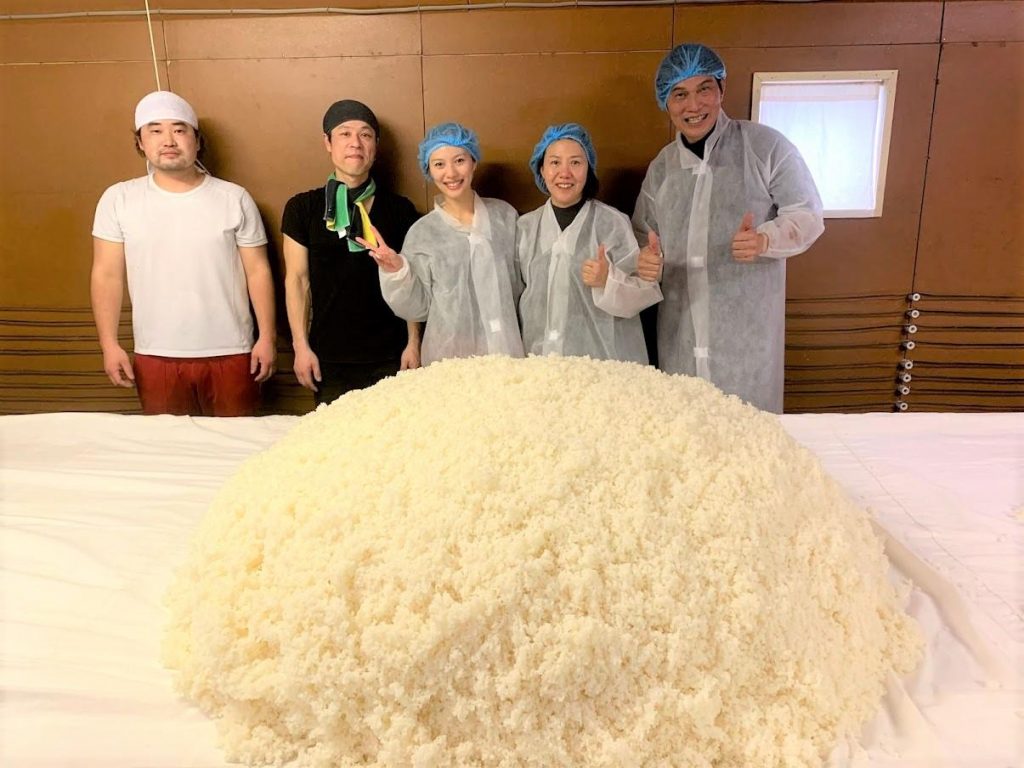
The rice in front of us weighs about 200kg and is expected to make about 1 ton of sake!
目の前の米の重さは約200kgで、1トンの酒を作ることができます。
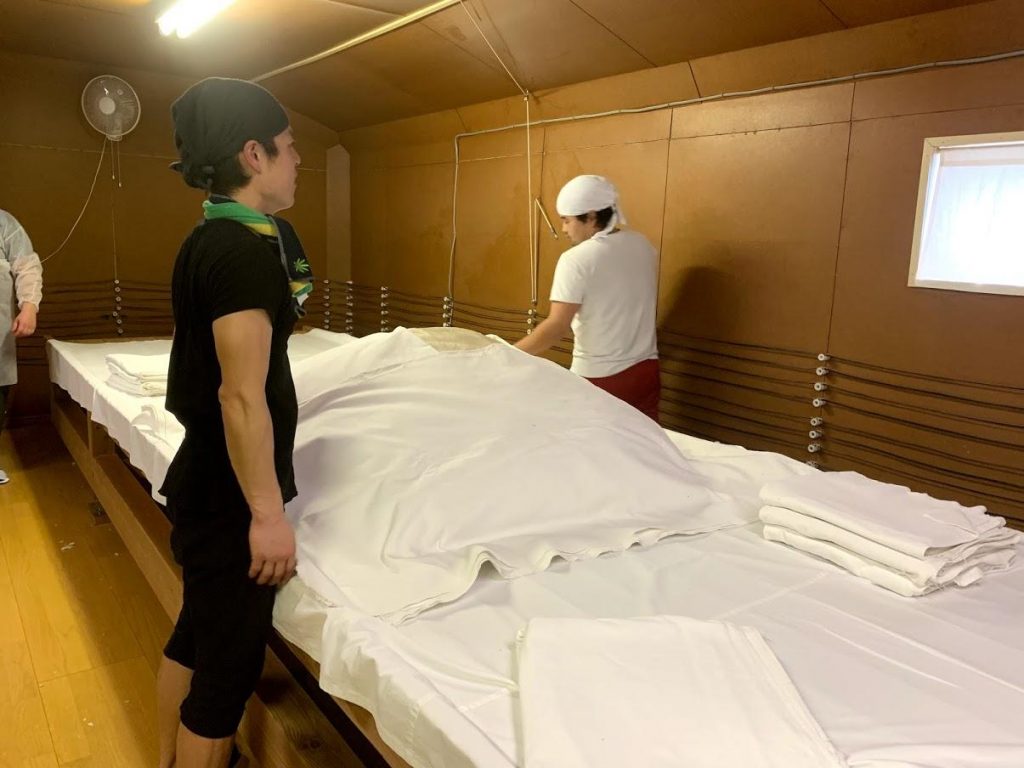
After the koji-kin is sprinkled over the rice, it is pushed back into a mound and covered with a futon. It is left to rest so that the koji-kin can penetrate the rice and start the fermentation process. At Tamagawa Sake Brewery, there are typically 3-4 people working in the Koji room from 10am to 3pm. Over three days, the temperature is strictly controlled as the rice malts to become koji.
麹が米の上にふりかけられた後、それは真中に塚のような押し戻され、布団で覆われます。 麹菌が米に浸透して発酵を開始できるように、休ませます。 玉川酒造では、午前10時から午後3時まで、通常3〜4人が麹の部屋にいます。 3日間かけて、米が麹になるように厳しく温度管理されています。
Making Raw Sake
生酒を造りましょう
After 3 days in the Koji room, the rice is then transferred to a tank and stirred to build the main mash or “moromi.” Stirring a tank filled with rice, water and koji is really hard work!
We did not get to try this part of the sake making process, but we did get some photo opportunities.
麹の部屋で3日後、米はタンクに移され、「もろみ」を作るためにかき混ぜられます。
私たちはこの部分の酒作りプロセスを経験することができませんでしたが、何枚かの写真を撮ることができました。

Next, the moromi is pressed and filtered to separate the liquid sake from rice to give raw sake. The leftover rice solids that come out of this step in the sake production process are called sake kasu (酒粕) or lees. The Japanese believe that sake lees have great health benefits and can be used for many things, such as a pickling agent, cooking paste, marinade, cakes, or amazake.
次に、もろみをろ過して米から液酒を分離させ、生酒を作ります。 酒の製造工程のこの段階で出来る残りの米は、「酒粕」と呼ばれます。 日本人は、酒粕はとても身体によく、お酢、練り物、マリネ、ケーキ、または驚くべき多くのものに利用できると信じています。
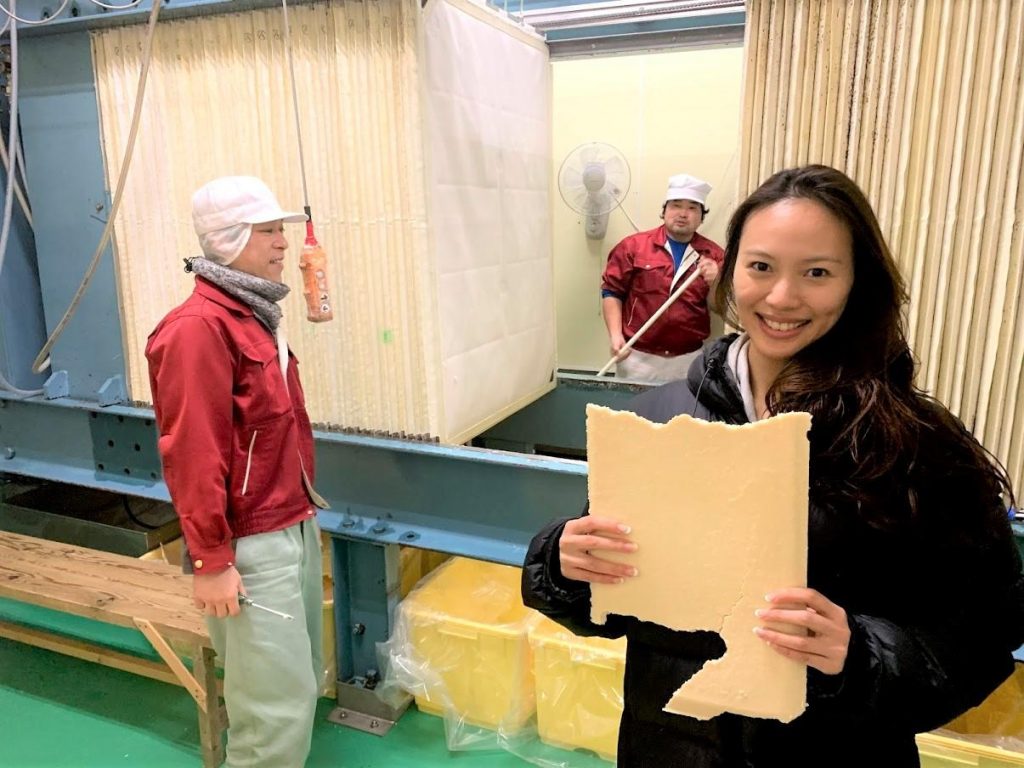
The Japanese often tout that the secret to delicious sake is always in good, pure water. The water used in sake brewing is called shikomi-mizu, literally “preparation water.” At Tamagawa Sake Brewery, natural spring water gushing from the nearby mountains is used, and you can try a taste of the water yourself just outside the brewery! If you bring a container you can even take some water home. If you visit Tamagawa Brewery in the warmer months from May to November, when there is no snow, you can see the stream on the brewery’s grounds.
日本人は、美味しい日本酒の秘決は、常に純粋な水にあるとよく言います。 酒造りに使われる水は、仕込み水と呼ばれ、文字通り「準備水」と呼ばれています。玉川酒造では、近くの山から湧き出る天然の湧き水を使っていますので、醸造所のすぐ外で味わうこともできます。 5月から11月までの暖かい季節の雪が降らないときに玉川醸造所を訪れると、醸造所の敷地内で小川を見ることができます。
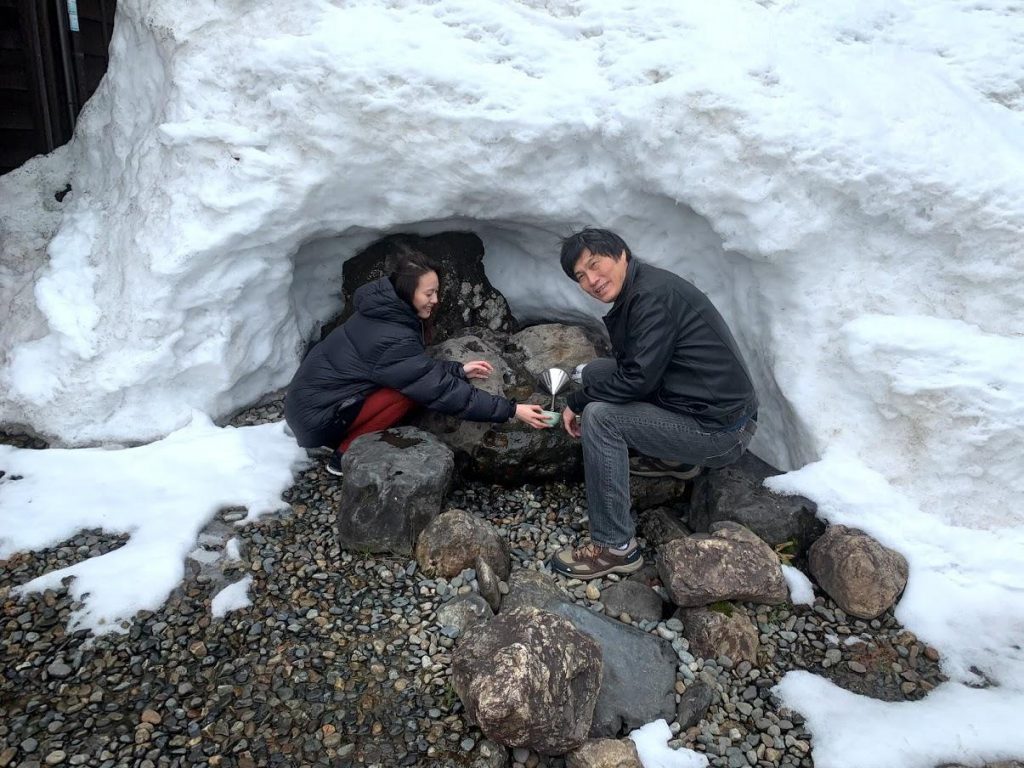
A Snow-Capped Cellar
雪をかぶったセラー
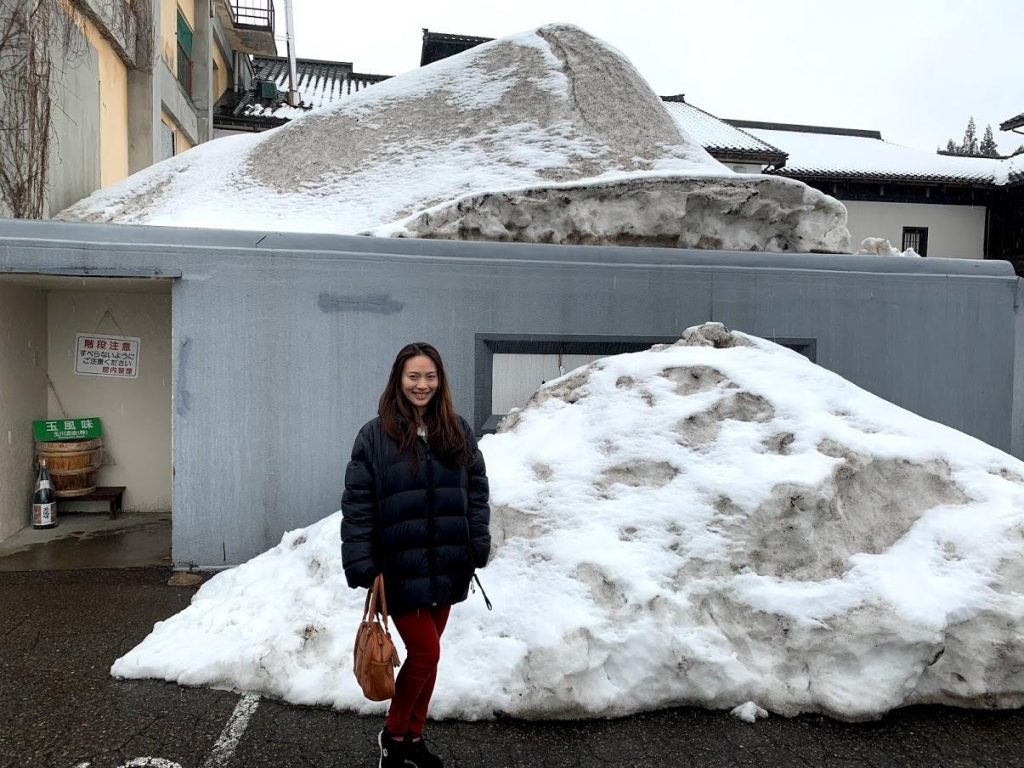
At Tamagawa Sake Brewery, sake is stored in a natural refrigerator they call the “snow cellar.” This cellar is covered with snow and retains a constant temperature of 2-3°C throughout the year. When the weather gets warmer, the snow is covered with a sheet to keep it from melting.
玉川酒造では、酒を天然の冷蔵庫に入れて「スノーセラー」と呼んでいます。 この地下室は雪で覆われており、年間を通じて2〜3℃の一定の温度を保っています。 天気が暖かくなると、雪が溶けるので、それを防ぐために雪で覆われています。
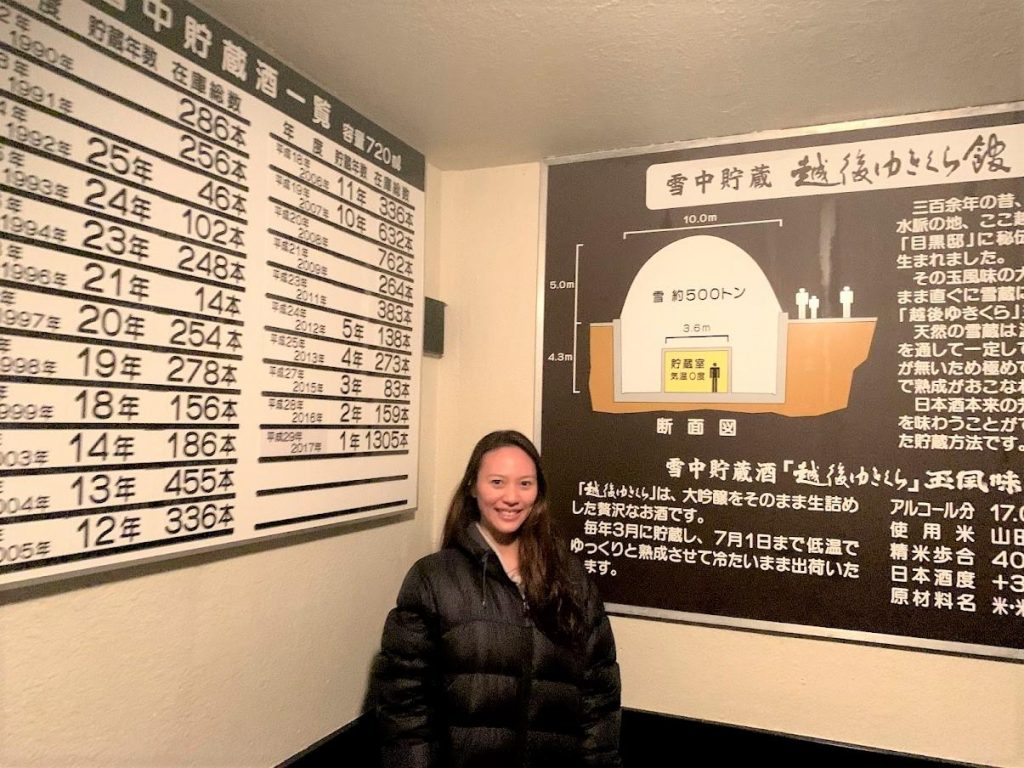
Entering the cellar is almost like entering a secret basement hideout! In the winter, up to 500 tons of snow cover the cellar where sake is stored.
地下室に入ることは秘密の地下の隠れ家に入るようなものです! 冬には、酒が貯蔵されている地下室に最大500トンの雪で覆います。
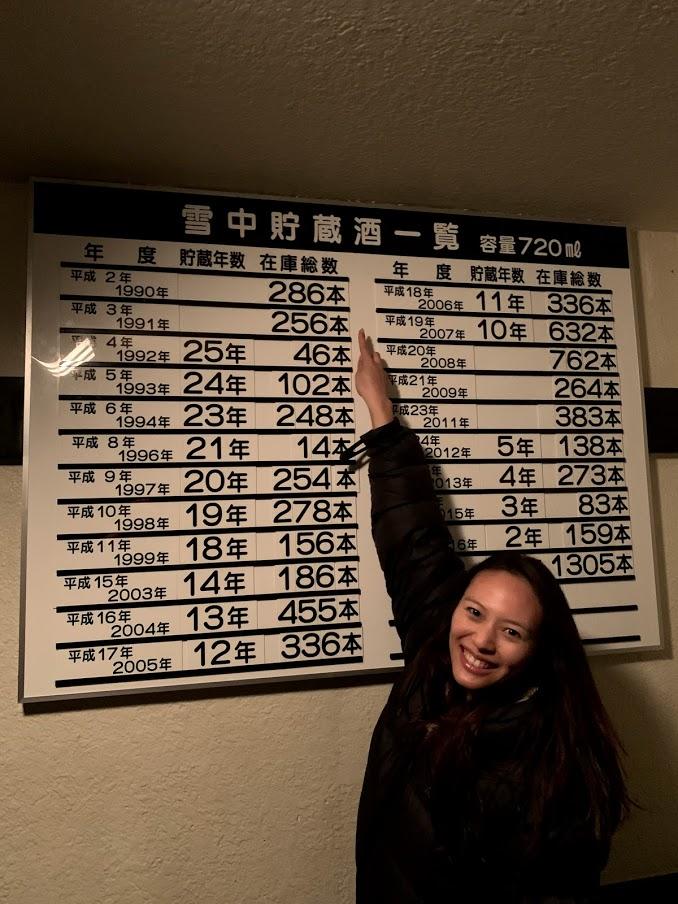
The constant cool temperatures make the cellar perfect for storing sake! Due to this natural refrigeration, Tamagawa Sake Brewery is one of the few breweries that can store aged sake. There was even sake from the 1990s! We had not tried aged sake before, and so ordered one bottle of the 1990 year to try.
涼しい気温のため、地下室は酒を保存するのに最適です。 この自然冷蔵のおかげで、多摩川酒造は熟成酒を貯蔵できる数少ない醸造所の1つです。 1990年代からの酒もありました! 私たちはこれまで熟成酒を試したことがありませんでした。ですので、1990年のボトルを飲んでみたいと玉川酒造にお願いしました。
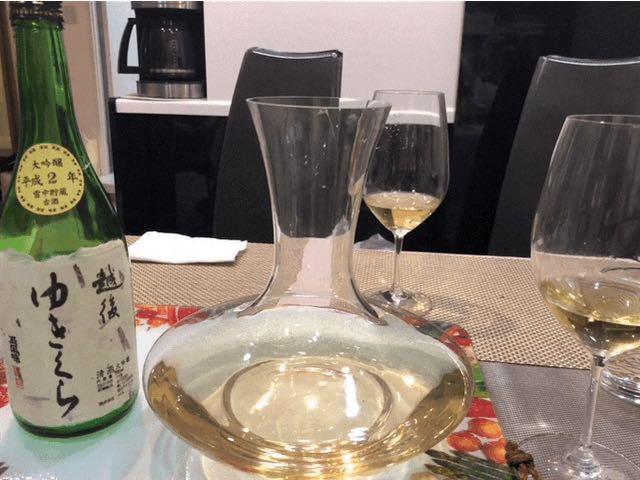
Protected by the snow, the aged sake from Tamagawa Sake Brewery develops an elegant, round, complex taste with a ripe tinge yet clean finish. A truly special sake from the land of heavy snow, matured with the aid of a white winterland.
雪に守られた玉川酒造のお酒は、熟した味わいながら清潔感のある優雅で丸みを帯びた深い味わいを生み出します。 白い大地の助けを借りて熟した、天使のような雪が舞い降りる雪深い地方からの特別な… 特別な日本酒。
Labelling Your Own Sake Bottle
自身の酒瓶にラベルを付ける
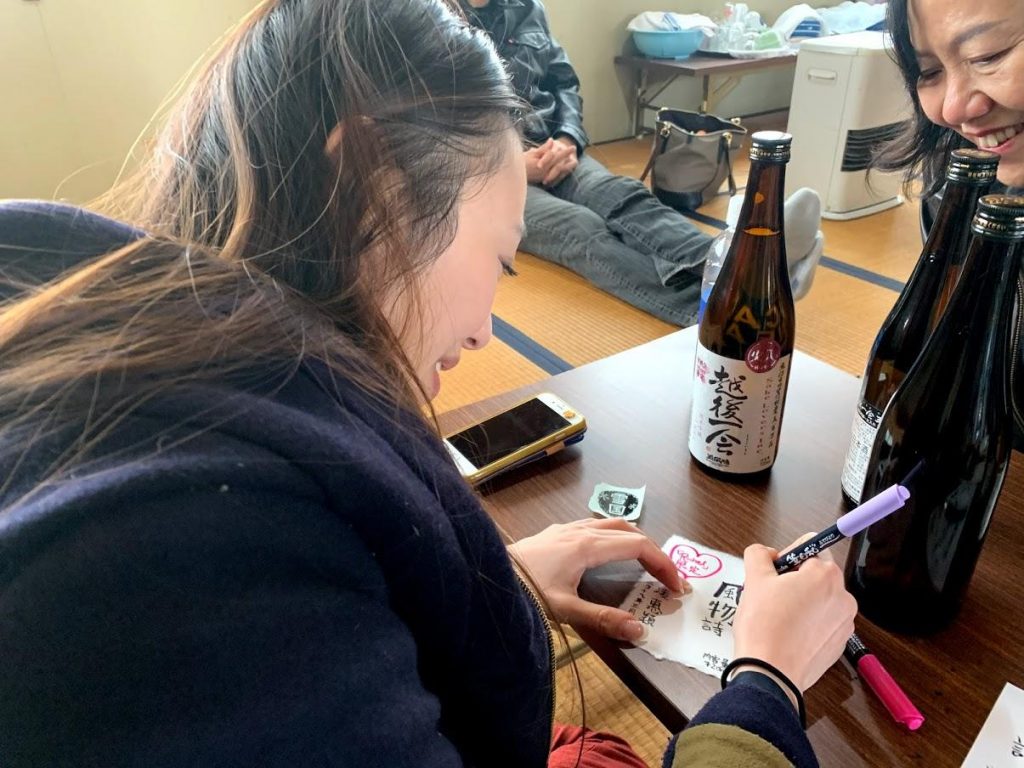
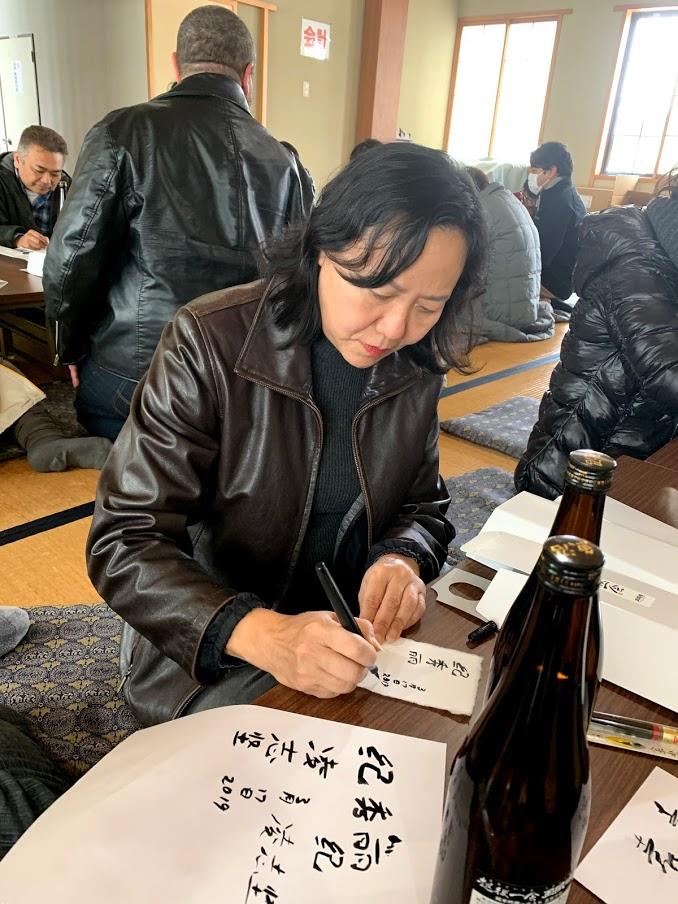
The next part of our trip involves writing sake labels for our very own bottle of sake!
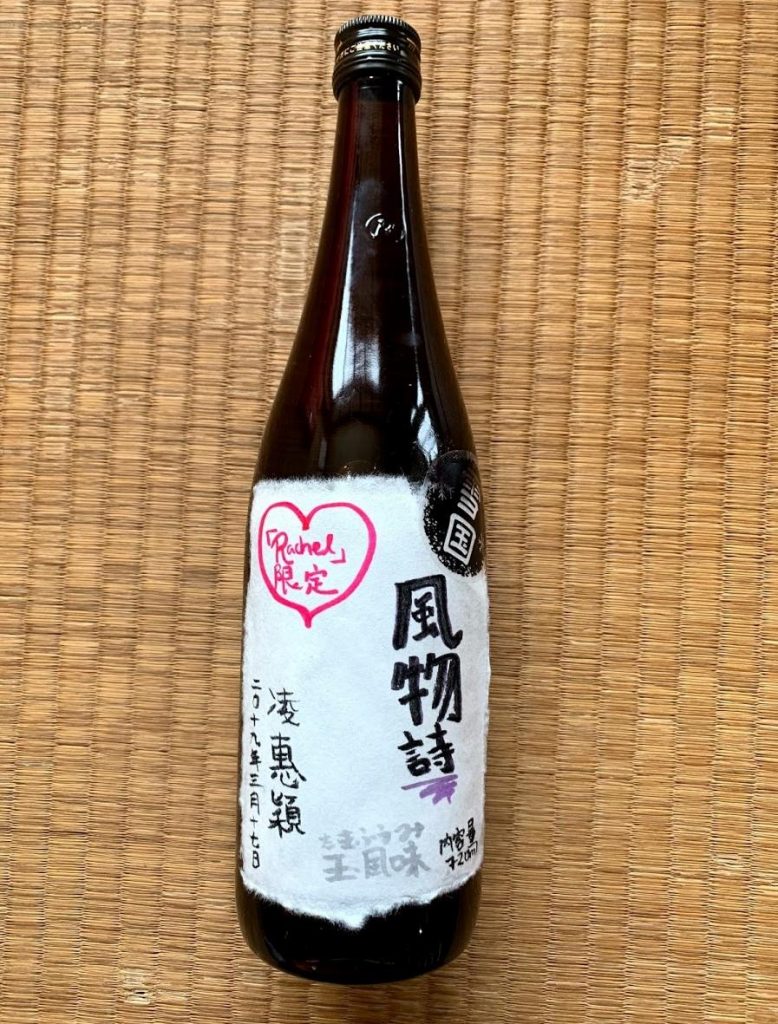
This special bottle is a Rachel Limited Edition! Anyone wants to give it a try? Hahah.
この特別なボトルはレイチェル限定版です! 誰か飲んでみたいですか 笑)
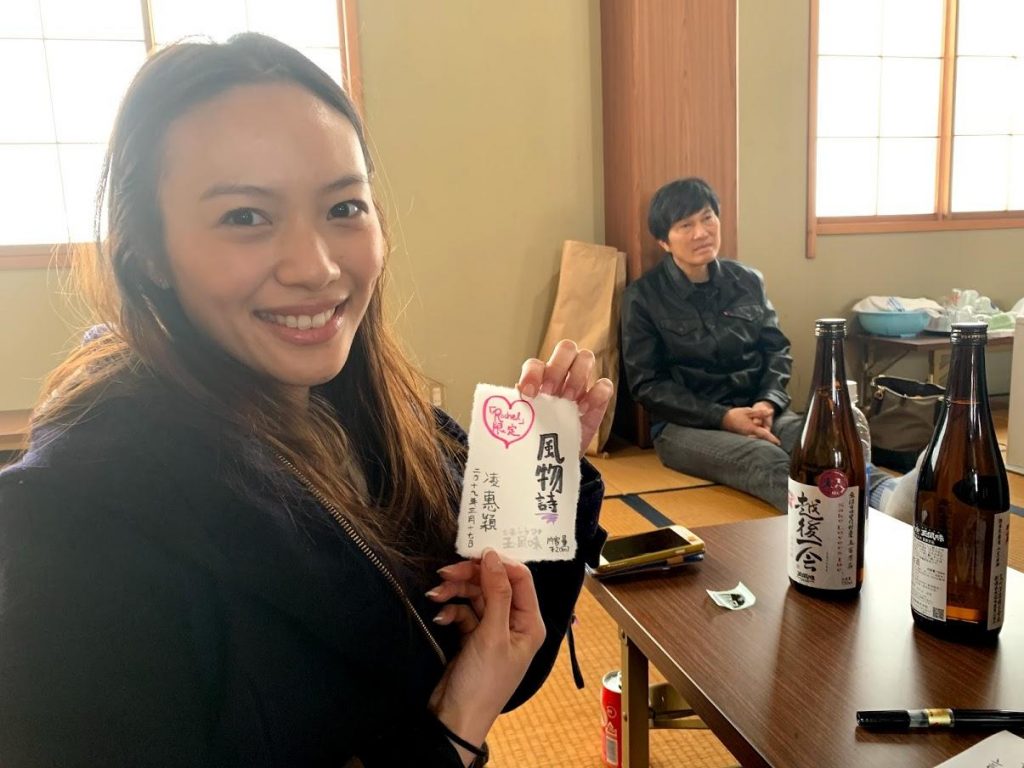
I decided to name my sake using a phrase from traditional poetry describing natural and seasonalscenery: Fu Butsu Shi (風物詩, ふうぶつし). In Japanese, this phrase is often used to refer to a feature that reminds one of a particular season, such as Spring flowers, or Autumn foliage or a pastime related to that season. To me, this bottle of sake represents the time that I spent with my parents, which is often a seasonal affair since we are separated by oceans living in different countries.
私は自然と季節の風景を描いた伝統的な詩からのフレーズを使って
酒に名前をつけることにしました:風物詩。
日本語では、この句は春は桜、秋は紅葉、またはその季節に関連する行事など、特定の季節の一つを思い出させるためによく使用されると思います。 私にとって、この酒は私が両親と過ごした時間を表しています。私たちは海によって隔てられた別々の国に離れてすんでいるので、これは私達にとっての「風物詩」と思います。
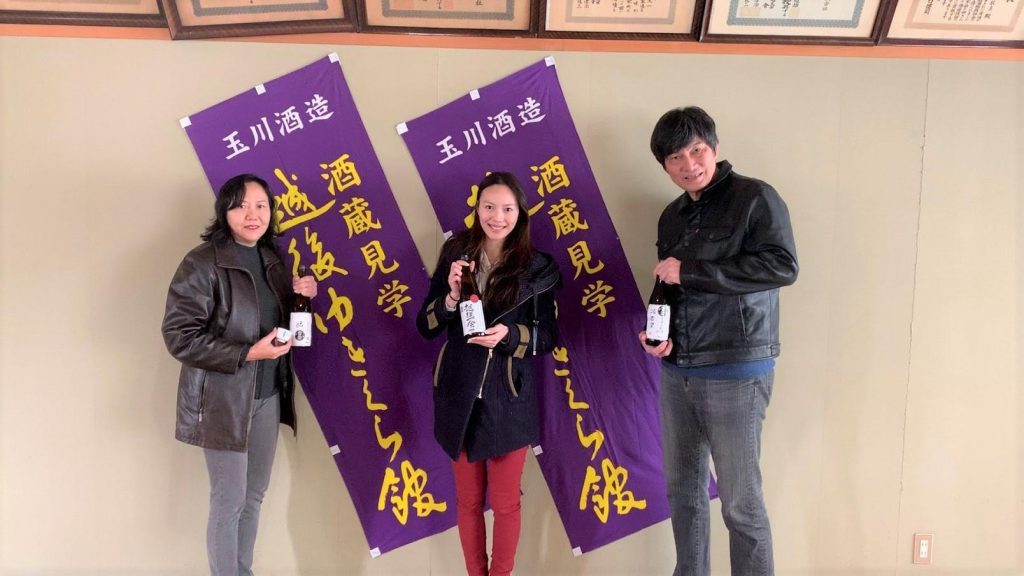
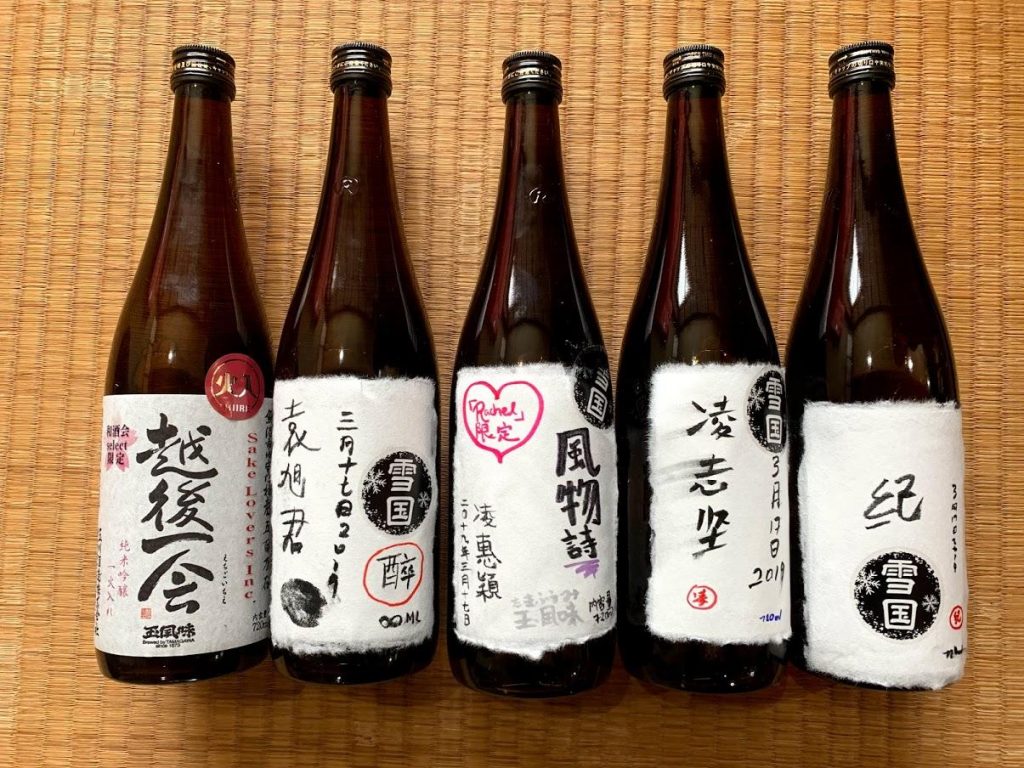
All of our individualized labels!
各人各様のラベル

Group Photos with all of our own handmade labels!
手作りのラベルを使ってグループ写真を撮ろう!
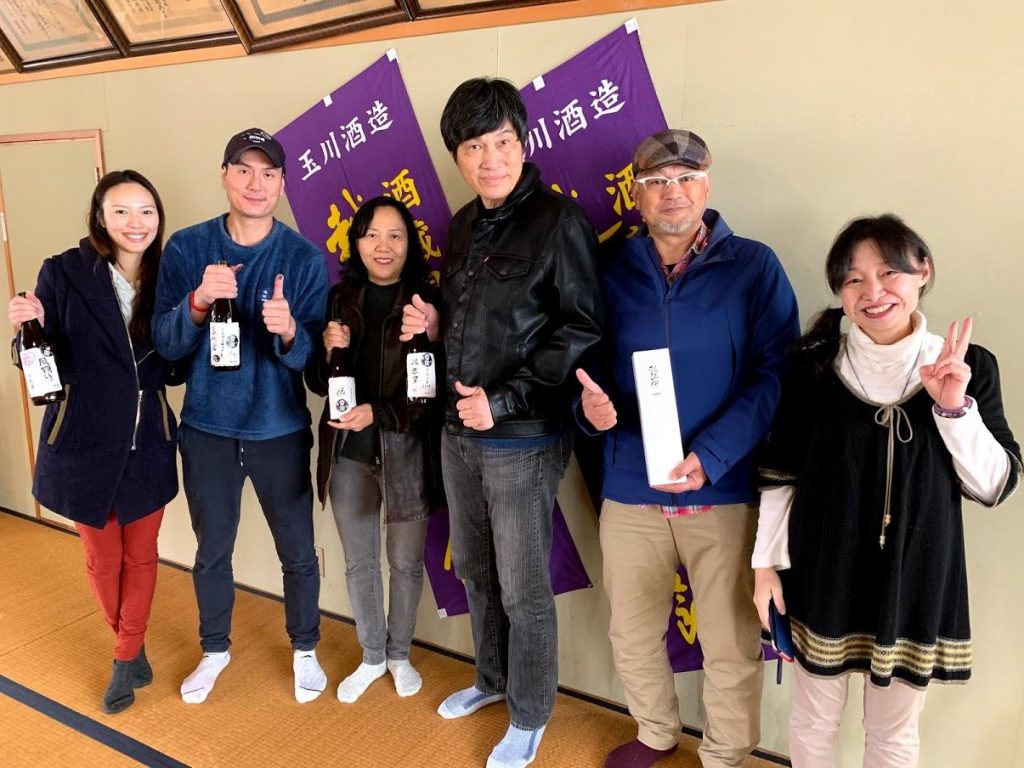
The lady on the right is Ms. Yuki Imanashi, Sake Sommelier and CEO of Sake Lovers, Inc.
右側の女性は、酒ソムリエとサケ・ラバーズ株式会社の社長である今西由紀さんです。
Last Thoughts
最後の一言
Although it was fun and a great experience to get a crash course on sake brewing over the weekend, the reality is that the process from washing the rice to having the sake pressed actually takes around 2 months (~70days). Customarily, breweries in Japan start the brewing process after the harvest season in Autumn, and fresh sake is generally released every Winter. While modern breweries with refrigeration can now operate year-round, many traditional family-owned sake breweries are still seasonal, operating only in the cold winter months.
週末に酒造りのクラッシュコースを受講するのは楽しかったですし、素晴らしい経験でしたが、実際には米を洗うところから酒を圧搾するところまでのプロセスは約2ヶ月(〜70日)かかります。 慣習的に、日本の醸造所は秋の収穫シーズンの後に醸造を開始し、新鮮な日本酒は一般的に毎年冬にリリースされます。 冷蔵付きの近代的な醸造所は一年中営業できるようになりましたが、多くの伝統的な家族経営の酒蔵はまだ季節限定で、寒い冬の間だけ営業しています。
Niigata, where Tamagawa Sake Brewery is situated, is a mountainous region on the central Honshu Island. The region has been long established as a center of Japan’s leading sake manufacturers thanks to the Shinano-gawa River leading into exceptionally fertile rice cultivation. There used to be over 30,000 breweries in Japan during the heyday of sake brewing, but now only fewer than 2,000 sake breweries exist. Nonetheless, the drink has steadily grown in popularity overseas, with breweries opening in North and South America, China, Southeast Asia, and Australia. However, at the same time, many small family-owned breweries in Japan that have been in operation for generations are dying out as they are unable to find successors or expand the business. Sake Lovers aims to help these breweries with their marketing and promotions overseas, and hopefully spread greater knowledge about delicious sake with people around the world.
玉川酒造のある新潟は、本州中部の山岳地帯です。 信濃川のおかげで非常に肥沃な稲作が行われ、この地域は日本の大手酒製造会社の中心地として古くから確立されてきました。 酒造の全盛期には、日本には3万を超える醸造所がありましたが、現在ではわずか2,000の醸造所しかありません。にもかかわらず、日本酒は着実に海外で人気が高まっており、醸造所は南北アメリカ、中国、東南アジア、そしてオーストラリアに広がっています。 しかし、同時に、後継者を見つけたり事業を拡大したりすることが難しいために、何世代にもわたって操業していた日本の多くの小さな家族経営の醸造所は無くなりかけています。サケ・ラバーズ株式会社は、これらの醸造所の海外でのマーケティングやプロモーションを手助けし、美味しい日本酒に関する知識を世界中に広めることを目指しています。
Stepping inside a sake brewery in Japan is certainly an eye-opening experience; not only do you get to try different varieties of sake, you also learn a lot about the process, the care and the tradition involved in creating rice wine. It truly is an educational experience to say “kanpai” to with a nice drink of Japanese sake!
日本の酒蔵を見学するのは確かに目を見張るような楽しい経験です。 さまざまな種類の日本酒を試すことができるだけでなく、日本酒の製造に関わるプロセス、手入れ、伝統についても多くのことを学びます。 日本酒を飲みながら「かんぱい」と言うのは本当にためになる経験です!
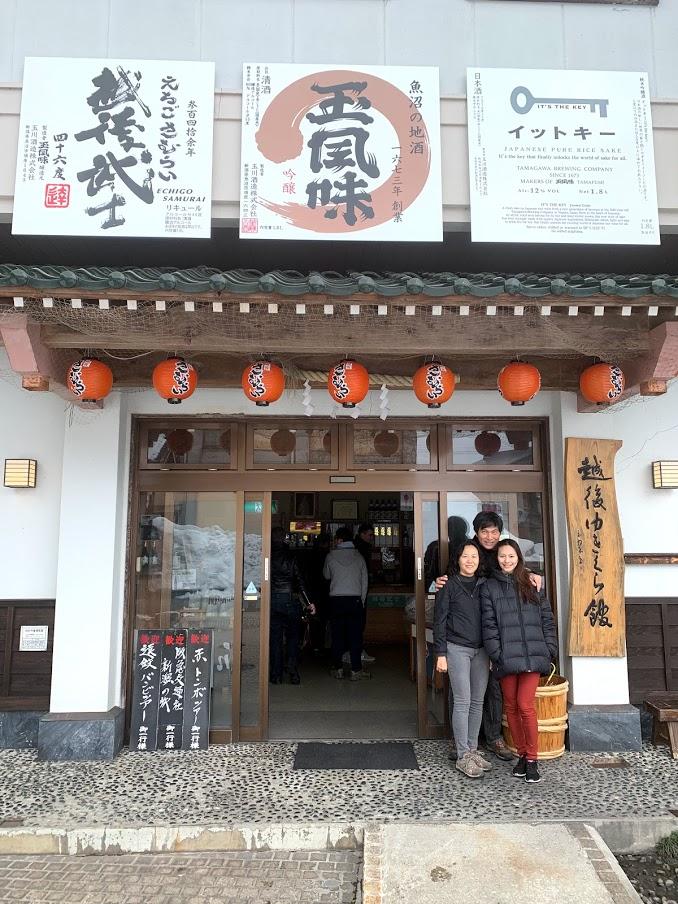
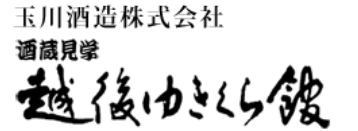 AccessTamagawa Sake Brewery, Inc. Echigo Yukikura-kan 玉川酒造株式会社 越後ゆきくら館 Address: 1643 Suhara, Uonuma-shi, Niigata-ken Hours: 9:00pm-4:00pm Closed on New Year’s Day Tamagawa Sake Brewery official website (Japanese-only): http://www.yukikura.com/ Tamagawa Sake Brewery Facebook page: https://www.facebook.com/tamagawa.sake/ |
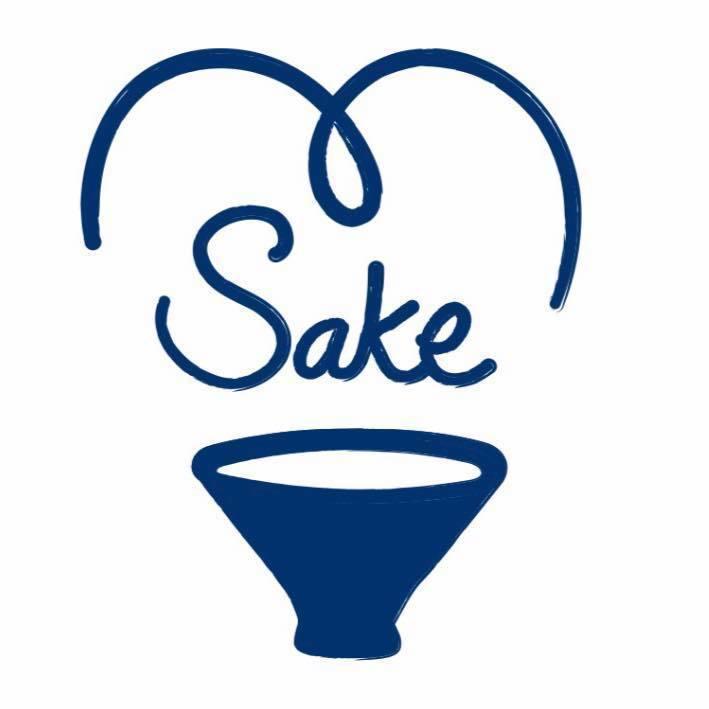 サケ・ラバーズ株式会社 Sake Lovers, Inc. Website: https://sakelovers.co.jp/ Facebook Page: https://www.facebook.com/SakeLoversJapan/ |

